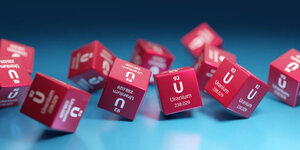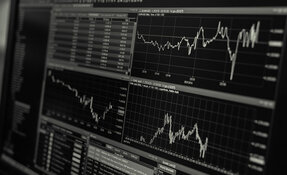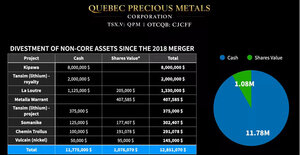The Energy Report: EVs don't burn gas, but power must come from some source of fuel, such as nuclear, coal, hydro, gas, solar, geo or wind. So, what is the value of an electric vehicle (EV)? How does it help?
Mansur Khan: From a societal and governmental point of view, there are a number of benefits. EVs can really help reduce carbon emissions. Their energy efficiency is very high, sometimes over three times that of conventional combustion engines. I think it can be argued that, even assuming an EV uses a power-generating mix that includes carbon-emitting sources such as coal- or gas-fired power plants, its life-cycle net carbon-emission production is significantly less—anywhere from half to one-third of that from comparable combustion vehicles. Reducing our dependence on oil is another concern, although it's more geopolitical. I think there is a top-down push to essentially steer the automotive industry into adopting electric vehicles.
Finally, from the end-consumer point of view, the operating cost of an EV is expected to be significantly less than an internal combustion vehicle. On average, they are about one-third the cost on a per-mile basis.
TER: In January, General Motors Inc. (GM:NYSE) announced that it would be producing 60,000 (60K) Chevrolet Volts per year, beginning this year. Does this signal a new wave of EV or hybrid development? How positive is this for lithium consumption?
MK: GM's commitment to the EV model is reflective of what you're seeing across the board with major auto manufacturers rolling out some form of an EV model in their lineup.
Aside from GM and Toyota Motor Corp. (TM:NYSE), Hyundai Motor Co. Ltd. (HYMLF:OTCPK), Nissan Motor Co. Ltd. (NSANY:OTCPK;7201:TYO), Volkswagen AG (VLKPY:OTCPK)—all the majors have announced their own models. And when you look on the battery side, you're seeing considerable research and development (R&D) investment going into battery manufacturing and technology development. Majors like Chinese battery and car manufacturer BYD Co. Ltd. (BYDDF:OTCBB), of which Warren Buffett owns approximately 10%, and BASF Corp. (EUR53.17:XETRA) are making inroads into the technology's development.
To answer your question, this is of course positive for lithium demand and consumption. Industry consultancy SignumBOX put out an estimate that electric and hybrid electric vehicles made up about 5% of total lithium carbonate equivalent (LCE) consumption in 2011, and that's expected to grow to about 25% by 2020. So there's quite a bit of room for growth there. The industry still has a long way to go, but in general, it's absolutely positive.
TER: Mansur, what is the lithium-ion battery industry's biggest challenge right now?
MK: The industry's main challenge is really to scale up in size, from the small consumer electronics to the larger batteries required for EVs, and to be able to do this without compromising on cost, safety and longevity. Technological development may not be happening as quickly as people had expected a few years ago, but it is certainly happening, and I think you will see these growing pains addressed over the coming years as other derivative applications are opened up.
As manufacturing capacity continues to expand, the cost of these lithium-ion batteries will come down, and that is already happening. A few weeks ago a Bloomberg report said the cost of lithium-ion batteries fell 14% year over year, and has fallen about 30% since 2009.
TER: Your February 2012 report cited a third-party consultancy firm, Roskill, which found that lithium consumption has outperformed both industrial production and GDP trends since 2002. But I don't see that reflected in equities. An index of small-cap lithium stocks shows a 40% decline over the last 10 years. A mix of larger- and small-cap companies is down 30% during the same period. Can you talk about the disconnect here?
MK: Without knowing the specifics of this particular index, I think I can make some general comments. Our view on this is that there are two aspects at play here, and both stem from the global recessionary environment that we are in.
Against this backdrop and coupled with slower technology development, we have seen a slower-than-expected uptake of lithium-ion batteries and EVs. The consensus view still holds that you're likely to see a mass adoption of EVs by about 2015 and thereafter. We argue that the equities are taking a bit of a wait-and-see approach to this, and so that would probably be one aspect of why they have not done so well. EVs currently make up only a small part of the overall lithium market, as just mentioned, but they are expected to really drive the majority of the growth over the coming decade.
The second aspect is more directly linked to equity markets in general. As you know, stock markets dislike uncertainty and volatility, and unfortunately we have plenty of both right now. In this kind of risk-averse environment, small-cap stocks can face the additional challenge of financing their exploration and development projects without causing a lot of dilution. So there's a bit of an added risk that is reflected in small-cap performance. We think these factors explain why the equity markets have not really kept pace with the underlying growth and demand for lithium that we are seeing.
TER: You've written that the lithium market is currently in a tight supply-demand balance, and that this has prompted capacity expansions by three of the four major lithium producers. You also wrote that prices have stabilized in the $5,500–6,500 per ton (/t) LCE. I realize there are different lithium compounds, but do you foresee a futures market for lithium?
MK: I think it's too early for that. You would need a market sizeable enough to maintain a spot supply inventory. Right now, what we are seeing is that most of the supply and demand is on a contract-by-contract basis, and these are typically one-year contracts. There isn't much of a spot market to speak of, and until you have a secondary market open up, you are unlikely to see a futures derivatives market develop.
TER: Looking at the lithium equities market today, do you see it as a deep-value market? Or do you see it as a growth market? Are we at the foot of a growth curve?
MK: Going to the question of growth, I think that's definitely there in our view. The majors have been reflecting that, not just in what they've reported, but also in their outlooks. If you peruse through some of the recent commentary by the majors, they are all reporting strong growth in volume and prices, and in general they expect real growth in lithium demand to continue—anywhere from 6–11% by 2020. So that's a fairly healthy growth in demand. If you look at Talison Lithium Ltd. (TLH:TSX; Not Rated), for example, it is saying that the lithium market will almost double by 2020, and that's even excluding the EV component that you hear so much about. So that's definitely positive, and there's growth absolutely happening there.
TER: What lithium equities are you recommending to investors?
MK: When you're looking at the juniors, we believe that only companies with quality assets that are in advanced stages or have strategic backing will have a reasonable chance of making it to production.
I would highlight Nemaska Lithium Inc. (NMX:TSX.V; NMKEF:OTCQX). We have it rated Buy, Speculative Risk with a $1 target price. Unlike the brine developers in Argentina and Chile, this is a hard-rock developer based in Québec. Its Whabouchi property project has a Measured and Indicated resource estimate of 25 million (M) tonnes (metric ton or mt) grading at 1.54% lithium oxide. It also has an Inferred resource of 4.4Mmt grading at 1.51% lithium oxide.
The company is envisioning a two-phase strategy. Phase one will see production of 200K tonnes per year (tpa) of lithium concentrate. This is concentrate, not carbonate, at about a 6% Li2O grade. The operating cost is about $138/t of concentrate. And the preliminary economic assessment (PEA) from last year had an initial capex of $86M for the project.
Phase two essentially envisions a chemical conversion plant that would produce higher-value downstream chemicals, and in particular they're looking at lithium hydroxide. The PEA on this option was just commissioned. It has also done some pilot-level testing that shows some innovative departures from the conventional process used to produce lithium hydroxide, and the company is going to be filing for a patent on this pretty soon. This could be an interesting development.
Both the definitive feasibility study (DFS) of the concentrate production and the PEA are expected to be out in Q3/12. The company has a strategic partner behind it, Chengdu Tianqi Industry Group Co., the largest lithium battery material supplier in China, which owns 20% of Nemaska. Tianqi recently entered into an agreement with Targray Technology for international distribution of lithium compounds in North America and Europe. We see Nemaska fitting in quite well with this strategy.
Another thing we like about Nemaska is that it's located in a mining-friendly jurisdiction of Québec, which is trying to build a world-class EV industry by supporting R&D and bringing mining companies and strategic partners together. And of course you could argue that the open-pit conventional mining process has less mining and processing risk. Also, there are a couple of upcoming milestones, the DFS and the PEA. So we like that name.
TER: Another company?
MK: Going over to the brine-developer world, I would highlight Rodinia Lithium Inc. (RM:TSX.V; RDNAF:OTCQX). We have it rated Buy, Speculative Risk, with a target price of $0.80. This is a lithium brine developer with its flagship 100%-owned Diablillos project in the province of Salta in Argentina, which hosts resources of about 5 Mmt of LCE and is adjacent to one of the largest lithium producers in the world, FMC Lithium Corp.'s (FMC:NYSE; Not Rated) Hombre Muerto project, which has been producing for decades.
Diablillos is also adjacent to Lithium One Inc.'s (LI:TSX.V) Sal de Vida project. As you know, Lithium One is currently in the process of being acquired by Galaxy Resources Ltd. (GXY:ASX; Not Rated), which has a wholly owned lithium carbonate plant in China. So that's definitely an interesting development in the area. Diablillos has high lithium and potassium grades and low impurities that could enable economic extraction, and the PEA put out last year suggests robust economics. With cash costs coming in at a bit over $1,500/t of LCE, along with a strong potash byproduct credit potential, the company is envisioning production of 15K tpa of LCE. Aside from the flagship project, Rodinia also has a brine project in Nevada adjacent to Chemetall Foote's [subsidiary of Rockwood Holdings Inc. (ROC:NYSE)] existing project there.
But despite all this, the company trades at a large discount to its brine-base developer peers. We estimate an enterprise value of about $3/t, compared to the average of about $10/t. We would say that part of this has to do with Rodinia's relatively early-stage project and tight cash position. That's a risk, given the nature of current markets. Management is being prudent with cash, but it is steadily moving the project forward. Also, it does have the Chinese company Ningbo Shanshan Co. at its side.
TER: You said your target on Rodinia was $0.80. You have just taken that down from $0.90, is that right?
MK: That's correct. We put out a commodity update at the end of every quarter where we go back to the drawing board and look at foreign exchange (FX) rates and commodity assumptions. So part of the discount was about the FX, and the other part is that we are applying a slightly higher discount to the brine developers in Argentina due to the investment climate resulting from expropriation of Argentina's largest energy company, YPF from Spain's Reposol.
TER: You mentioned Rodinia's neighbor producers. You must be implying potential M&A.
MK: Yes, and overall, what we like about this story is that the company has a salar that it is not sharing with anyone else, and it will potentially have two large lithium producers right in its backyard, FMC and potentially Galaxy, both of which have talked about expansion. The company has a strong management team, and both CEO Will Randall and head of exploration Ray Spanjers have extensive experience in managing projects. And Ray actually was previously with FMC's lithium division.
TER: Another company?
MK: The second brine company that I would highlight is Lithium Americas Corp. (LAC:TSX; LHMAF:OTCQX). We are rating it a Buy, High Risk with a target price of $2.60. Now this is a more advanced brine developer, located in the province of Jujuy. Its Cauchari project hosts a high-grade resource of 8Mmt LCE. It's had extensive pump tests, pond- and pilot-level tests, as well as hydrological work done, and the company is currently on the verge of putting out a DFS on the project. It's also interesting to note that the DFS will trigger a decision by its strategic partners, Mitsubishi Corp (8058:TYO) and Magna International Inc. (MG:TSX, Not Rated), who have the option to secure 37.5% of lithium production in exchange for financing up to 37.5% of capital costs. So that's definitely a good arrangement to have in this kind of market.
Lithium America's PEA from last year had estimated low cash costs of about $1,434 per ton, based on 20K tpa of phase one production. And of course one common theme with these brine projects is that, given their low impurities, there's strong byproduct credit potential. There's good infrastructure in place. And as I said they're currently working through the final project approval from the province of Jujuy, which should be another catalyst for the stock. By the way, the province of Jujuy had essentially designated lithium as a strategic metal last year, and both Lithium Americas and Orocobre Ltd. (ORL:TSX; ORE:ASX) are currently working out approvals here.
Orocobre will be the last one I'll mention today. We have it rated Buy, High Risk with a target price of $2.80. This is the most advanced brine development project in our universe of coverage. Immediately north of Lithium Americas' Cauchari project is Orocobre's flagship Olaroz project, which also hosts a high-grade lithium resource of 6.4 Mmt of LCE. The company already has a DFS out on the project, and the cash costs are estimated at $1,512/t of LCE, and once again, given the low impurities, there is potential for byproduct credit.
A production rate of about 16K tpa is expected by the second half of 2013, and at the end of last year Orocobre finalized terms with its strategic partner, Toyota Tsusho Group (TYHOF:OTCPK). This will essentially enable Toyota to take an equity stake of up to 25% based on the project's net present value (NPV) estimated from the DFS. This also includes debt financing by a Japanese consortium for 60% of the project capex, which is a bit over $200M. So the final sign-off on these financing agreements would occur once the Jujuy provincial approval comes through.
TER: I've enjoyed meeting you very much, Mansur.
MK: Thank you very much, George, I really enjoyed the interview as well.
Mining Analyst Mansur Khan joined Dundee Capital Markets in 2007 as an associate covering the industrial, aerospace and special situation sectors. In late 2010, he switched into Dundee's mining group, where he covers a range of exploration and production companies in the uranium and lithium sectors. Since 2012, he has been providing lead coverage on the lithium sector. Prior to Dundee, Mansur worked for a number of years at a private design engineering company on various information systems and operations projects. He holds an MBA from the Rotman School of Management, University of Toronto and a Bachelor of Commerce in systems development from Ryerson University.
Want to read more exclusive Energy Report interviews like this? Sign up for our free e-newsletter, and you'll learn when new articles have been published. To see a list of recent interviews with industry analysts and commentators, visit our Exclusive Interviews page.
DISCLOSURE:
1) George S. Mack of The Energy Report conducted this interview. He personally and/or his family own shares of the following companies mentioned in this interview: None. Streetwise Reports does not accept stock in exchange for services. Interviews are edited for clarity.
2) The following companies mentioned in the interview are sponsors of The Energy Report: Lithium Americas Corp., Lithium One Inc., Nemaska Lithium Inc., Rodinia Lithium Inc. and Talison Lithium Ltd.
3) Mansur Khan: I personally and/or my family own shares of the following companies I mentioned in this interview: None. I personally and/or my family am paid by the following companies I mentioned in this interview: None.
4) Dundee Securities Ltd. and its affiliates, in the aggregate, beneficially own 1% or more of a class of equity securities issued by companies under coverage: None.
5) Dundee Securities Ltd. has provided investment banking services to companies under coverage in the past 12 months: Nemaska Exploration Inc.
6) All disclosures and disclaimers are available on the Internet at www.dundeecapitalmarkets.com. Please refer to formal published research reports for all disclosures and disclaimers pertaining to companies under coverage and Dundee Securities Ltd. The policy of Dundee Securities Ltd. with respect to research reports is available on the Internet at www.dundeecapitalmarkets.com.











































